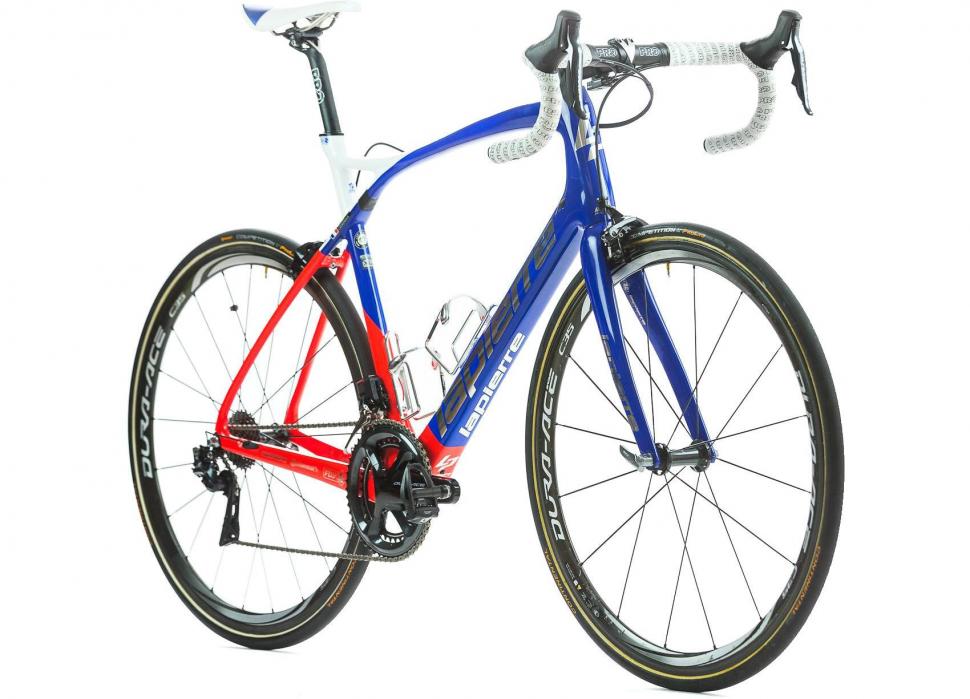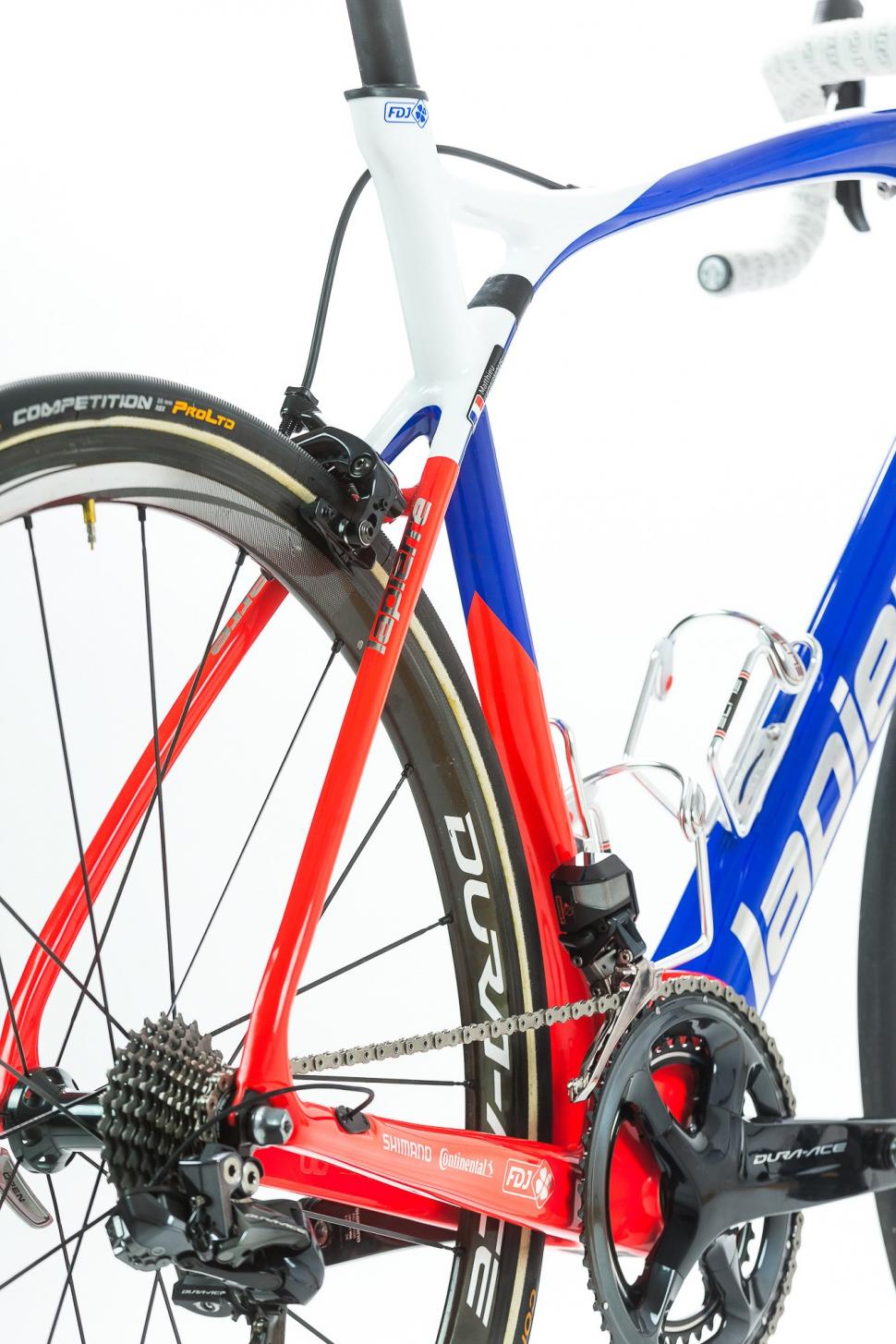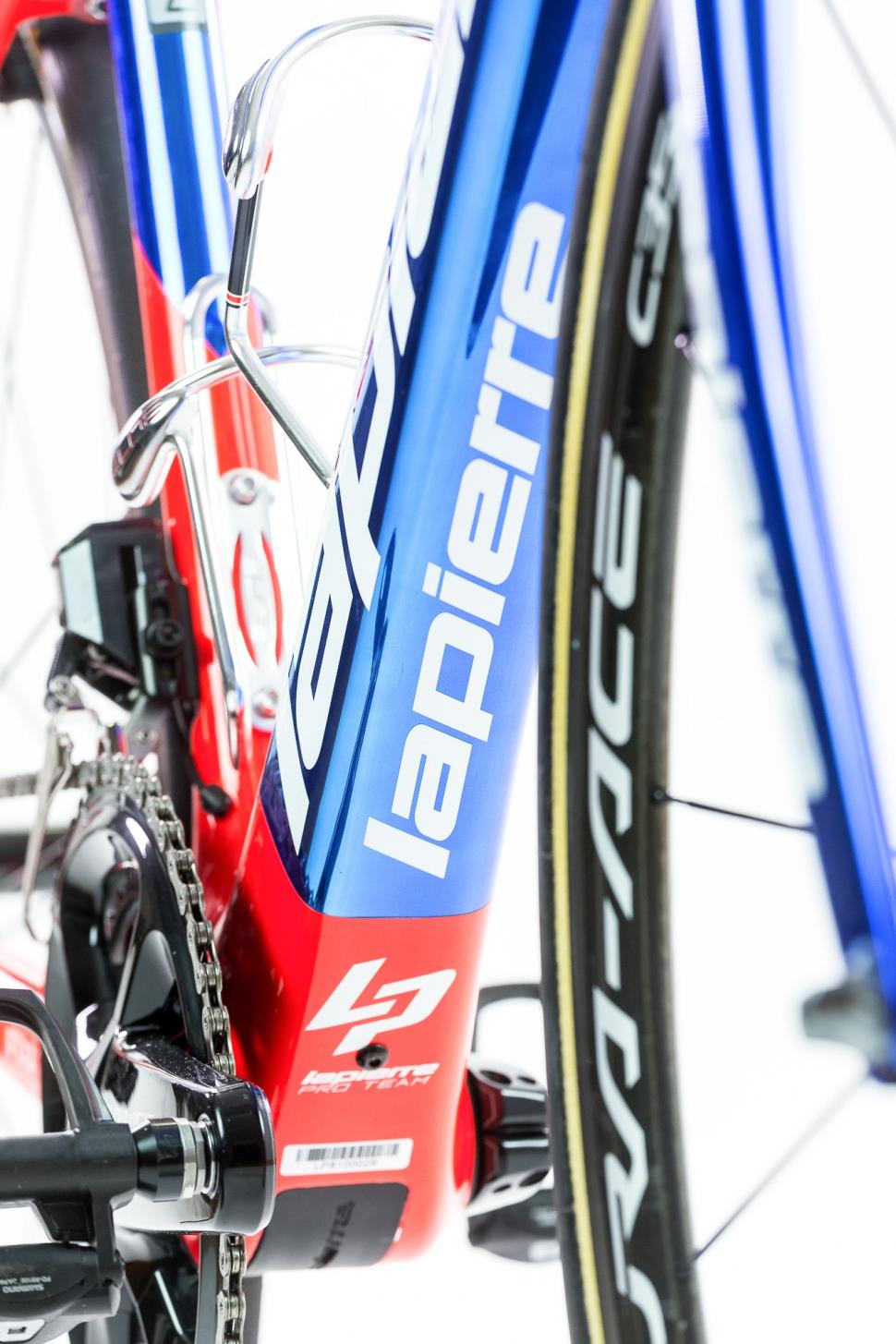- News
- Reviews
- Bikes
- Components
- Bar tape & grips
- Bottom brackets
- Brake & gear cables
- Brake & STI levers
- Brake pads & spares
- Brakes
- Cassettes & freewheels
- Chains
- Chainsets & chainrings
- Derailleurs - front
- Derailleurs - rear
- Forks
- Gear levers & shifters
- Groupsets
- Handlebars & extensions
- Headsets
- Hubs
- Inner tubes
- Pedals
- Quick releases & skewers
- Saddles
- Seatposts
- Stems
- Wheels
- Tyres
- Tubeless valves
- Accessories
- Accessories - misc
- Computer mounts
- Bags
- Bar ends
- Bike bags & cases
- Bottle cages
- Bottles
- Cameras
- Car racks
- Child seats
- Computers
- Glasses
- GPS units
- Helmets
- Lights - front
- Lights - rear
- Lights - sets
- Locks
- Mirrors
- Mudguards
- Racks
- Pumps & CO2 inflators
- Puncture kits
- Reflectives
- Smart watches
- Stands and racks
- Trailers
- Clothing
- Health, fitness and nutrition
- Tools and workshop
- Miscellaneous
- Buyers Guides
- Features
- Forum
- Recommends
- Podcast
TECH NEWS
 lapierre-pulsium-4.jpg
lapierre-pulsium-4.jpgLapierre launches new Pulsium at Paris-Roubaix
Paris-Roubaix has become a proving ground for new bikes and equipment, and Lapierre used the cobbled classics to launch its updated Pulsium endurance bike with integrated rear shock absorption technology and a host of other changes aimed at providing a higher level of performance for its race team.
This new Pulsium is a 2018 model year bike and is an advancement of the previous bike that was first launched in 2014. Integral to the Pulsium is an elastomer incorporated onto the seat stays where they intersect the seat tube and connect to the top tube.
- Five cobble-taming Classics bikes that will take the sting our of your ride
It calls this SAT (Shock Absorption Technology) and it comprises an elastomer ring that allows a small amount of flex between the top tube and seat tube. Where the previous system was constructed with three parts, the new version simplifies the design with a one-part system that Lapierre says has allowed it to improve the layup of the frame in this area as well as improved accessibility for replacement.
Lapierre has also worked on the shape and layup of the seat tube to provide a wider range of flex. The seat tube has a “flex zone” to help it absorb shocks. It doesn't say how much the system can deflect or how much it compares to the previous system in its communication.
As well as looking to improve comfort, Lapierre has also sought to improve stiffness by employing the same PowerBox as featured on its other race frames, which places more carbon in the lower half and less in the top section of the frame. Lapierre claims this contributes to a 40% improvement in bottom bracket stiffness, 20% in the head tube and 25% in the chainstays.
Also borrowed from the flagship Xelius SL is the same Trap Door Technology for housing a Di2 battery in the down tube. Lapierre reckons the placement of the Di2 battery in the downtube makes it easier for the mechanic to access it and also contributes to a better handling balance when standing on the pedals. Another design detail borrowed from its Xelius SL is the offset of the fork, which is now the same on the Pulsium in order to provide the “same responsive ride feeling.”
Lapierre has also restyled the Pulsium to make it look closer in appearance to the Xelius SL race bike. And like that bike, the Pulsium uses conventional dual pivot brake calipers and not direct mount brakes.
“At a race like Paris-Roubaix, the behaviour of the bike needs to be completely different. The succession of shocks has a huge negative effect on energy and stability. With the Pulsium the aim was to create a platform that brought together comfort and stiffness in order to transfer the maximum energy possible into pedalling. In the new version, we’ve increased lateral stiffness without sacrificing comfort to further improve energy efficiency. The new Pulisum will be my classics weapon,” commented Arnaud Demare ahead of Paris-Roubaix. He finished 6th.
- Review: Lapierre Pulsium 700
Whether the pros want them or not, a number of bike manufacturers are keen to try and develop interesting ways of providing bikes that can absorb vibrations and shock impacts caused from riding over rough roads and cobbles, and races like Paris-Roubaix are a good demonstration for these sorts of bikes.
David worked on the road.cc tech team from 2012-2020. Previously he was editor of Bikemagic.com and before that staff writer at RCUK. He's a seasoned cyclist of all disciplines, from road to mountain biking, touring to cyclo-cross, he only wishes he had time to ride them all. He's mildly competitive, though he'll never admit it, and is a frequent road racer but is too lazy to do really well. He currently resides in the Cotswolds, and you can now find him over on his own YouTube channel David Arthur - Just Ride Bikes.
Latest Comments
- Rendel Harris 17 min 5 sec ago
Well yes but that's the point of leasing, to buy that £60,000 car on finance you might have to put down a deposit of £10,000 and pay £1500 a month...
- brooksby 1 hour 35 min ago
I had to walk past my old stomping ground on Park Row the other day, which is the western end of this same scheme (Marlborough Street by the BRI,...
- brooksby 1 hour 39 min ago
Or turning that on its head: the aforementioned paint can can cause harm if it is *accidentally* damaged or is otherwise used in a way for which it...
- eburtthebike 6 hours 7 min ago
A comedian with a purpose can achieve more than the politicians e.g. Zelesky.
- Rekrab 8 hours 1 min ago
MORE LANES, MORE LANES!!!!
- Simon E 8 hours 7 min ago
The numbers don't tell anything like the whole story....
- David9694 9 hours 18 min ago
check under 'W'for "What cars do to people"
- Global Nomad 10 hours 28 sec ago
good to see you're testing the farsports wheels - hope to see road.cc continue to expand the range of brands it considers. These or the shallower...
- chrisotherwise 10 hours 33 min ago
Sadly very normal. And the sand contains loads of evil little shards of flint.


Add new comment
2 comments
I think the Xelius does have direct mounted brakes.
They could have called it Domane.